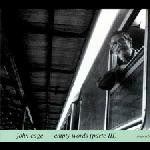JOHN CAGE begins anywhere
"John Cage begins anywhere" is an art exhibition focused on records, photographs, books, videos and visual scores by the legendary composer, held at Die Schachtel (O' art space) in Milano, in july 2011
Empty words (parte III)
John Cage's empty words is something of an epic in reverse: a diminutive vocal exercise divided into four distinct parts that gradually breaks down the writings on sound from Henry David Thoreau's Journal into pure vocalise. Disarticulated, distended and utterly transformed, Cage's recitation utterly abandons all connection to linguistic meaning and becomes pure aesthetic glossolalia. The nearly three hour performance documents Cage reading from the third part of empty words at Teatro Lirico in …
